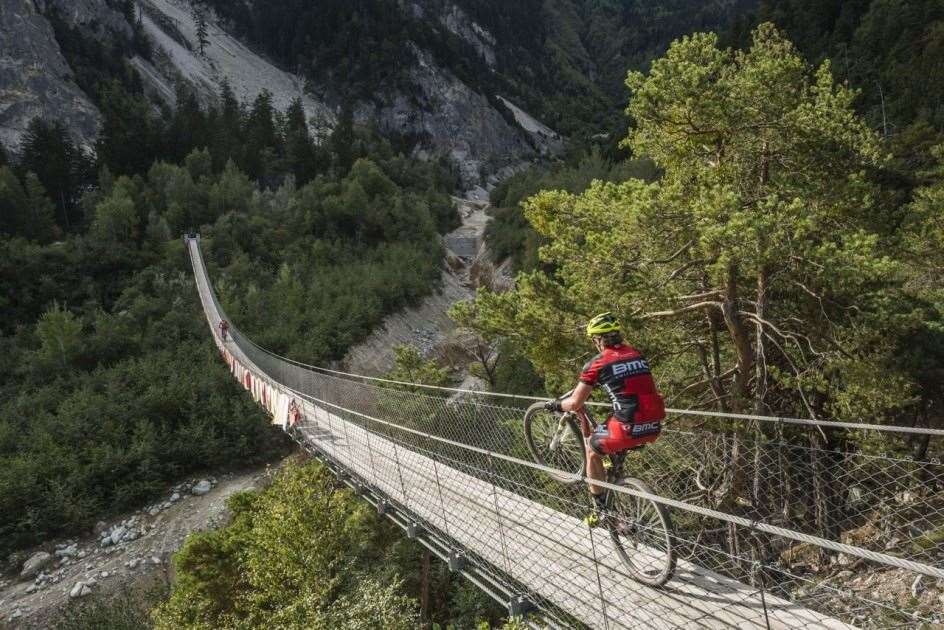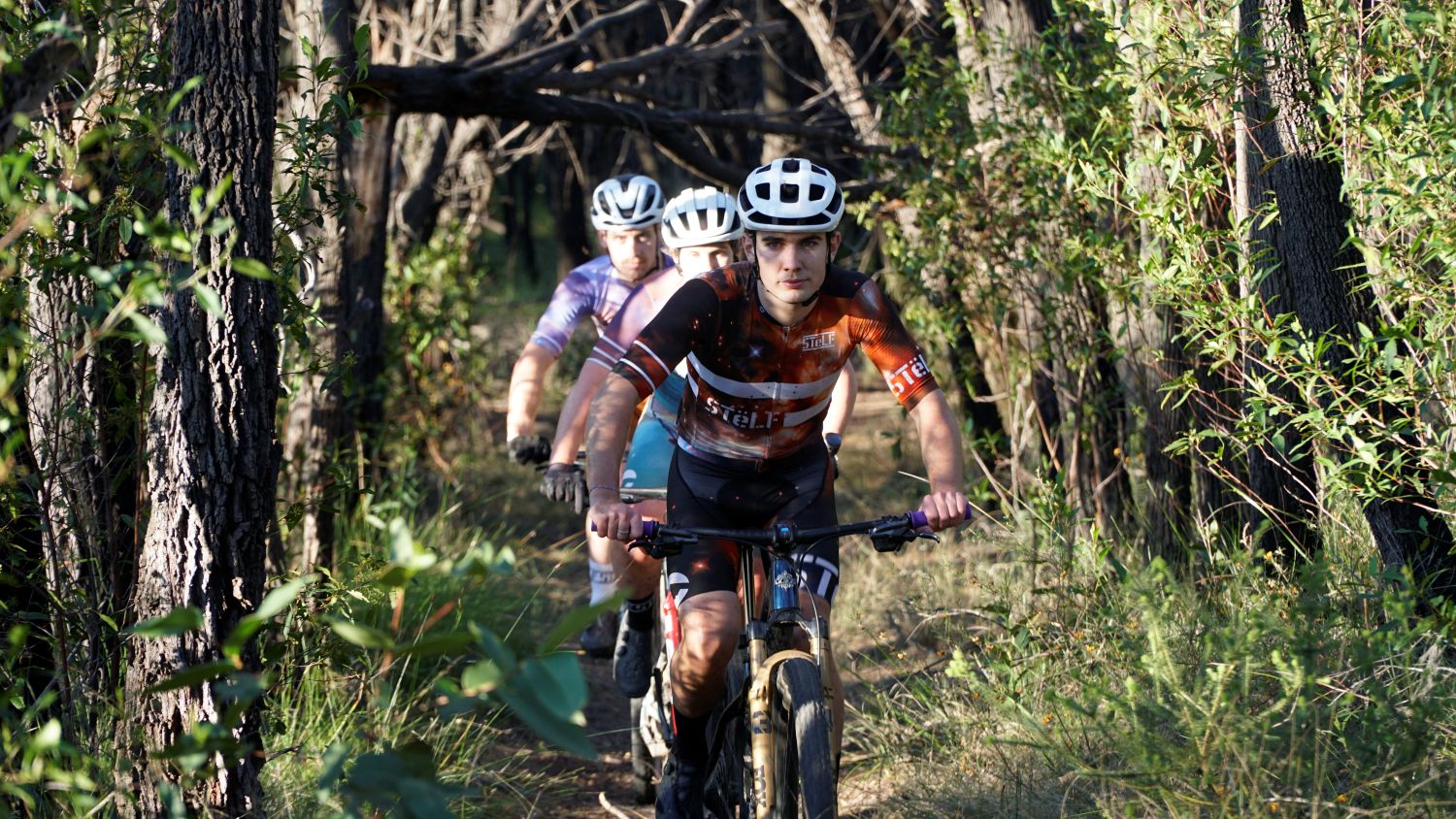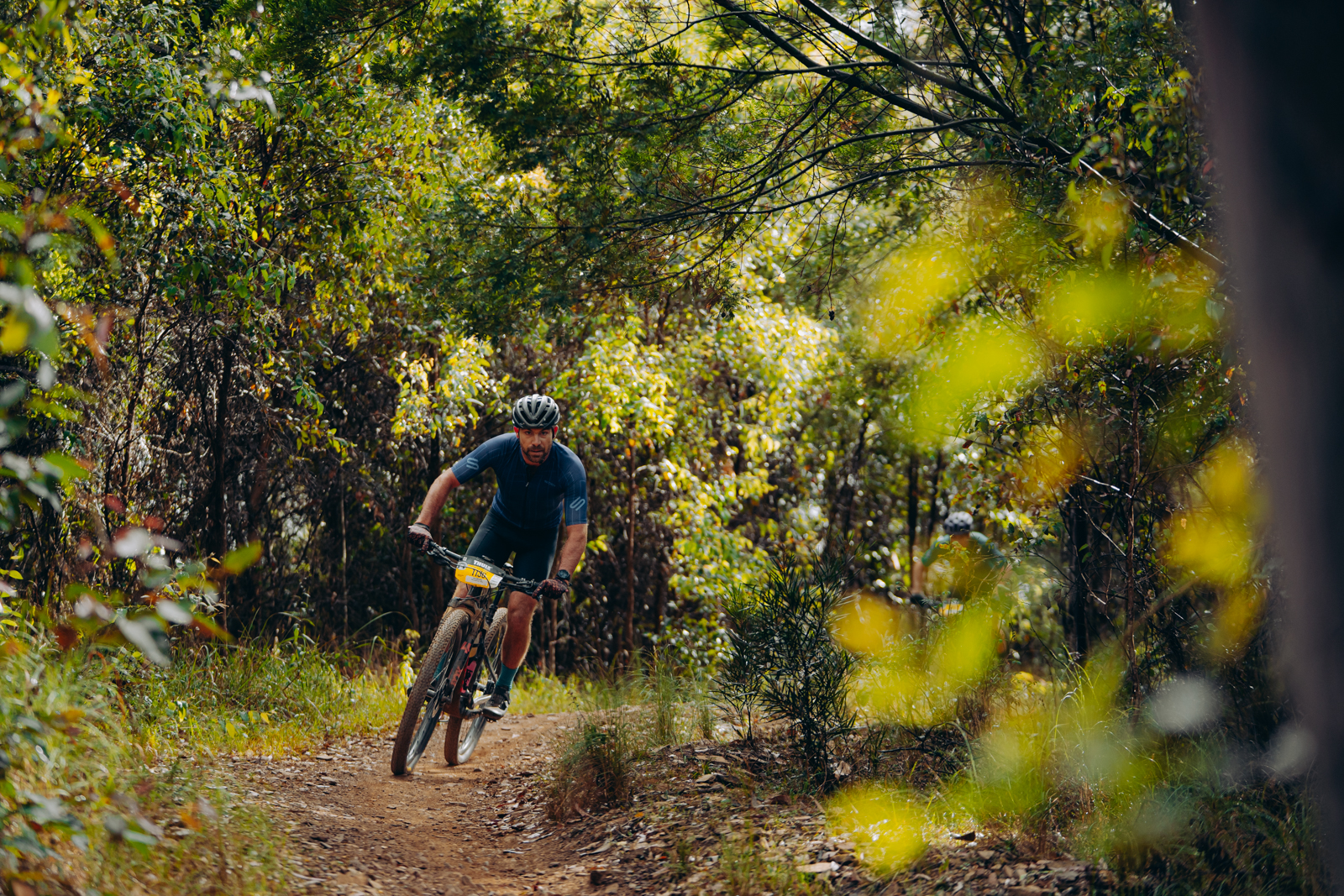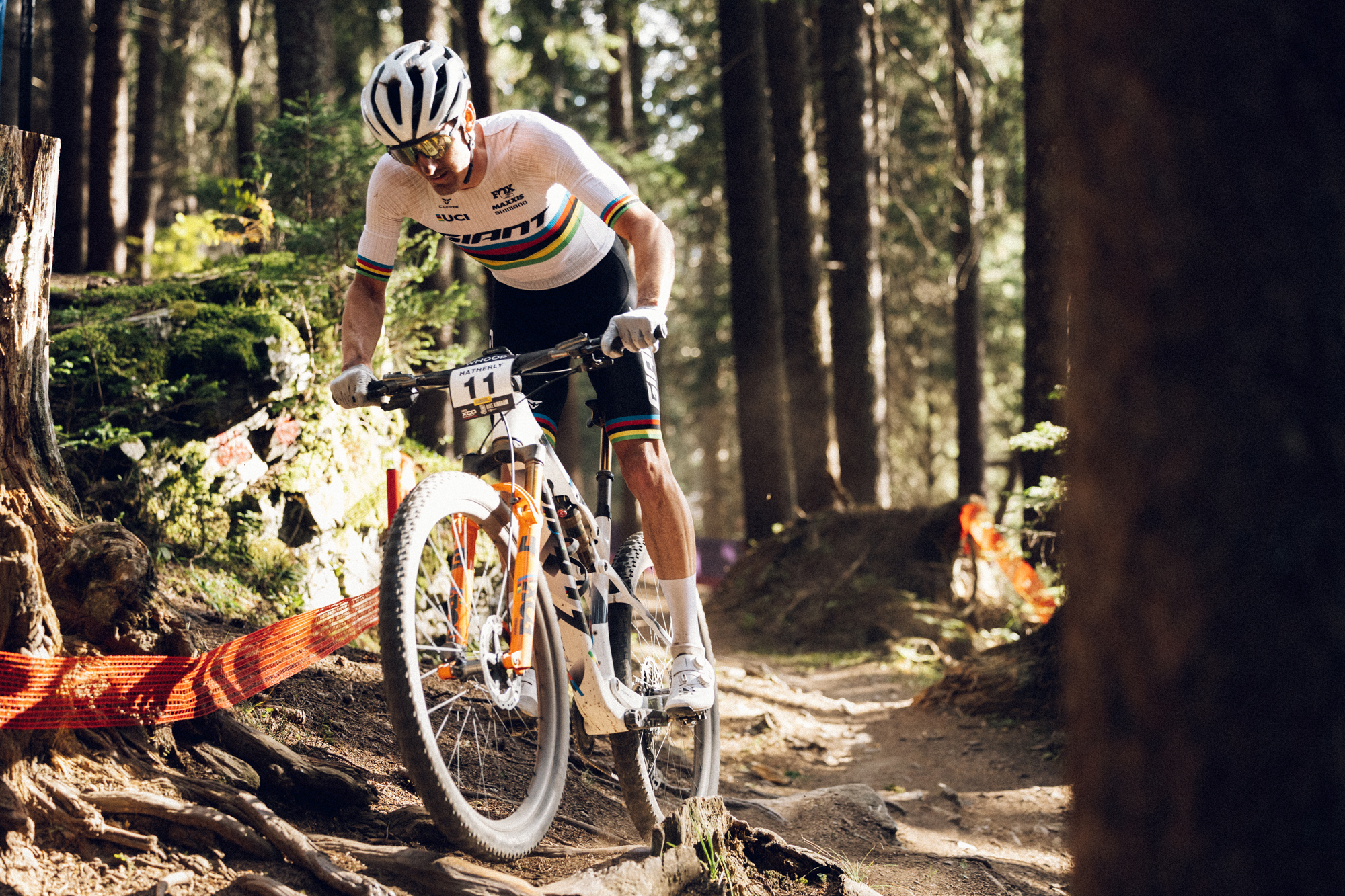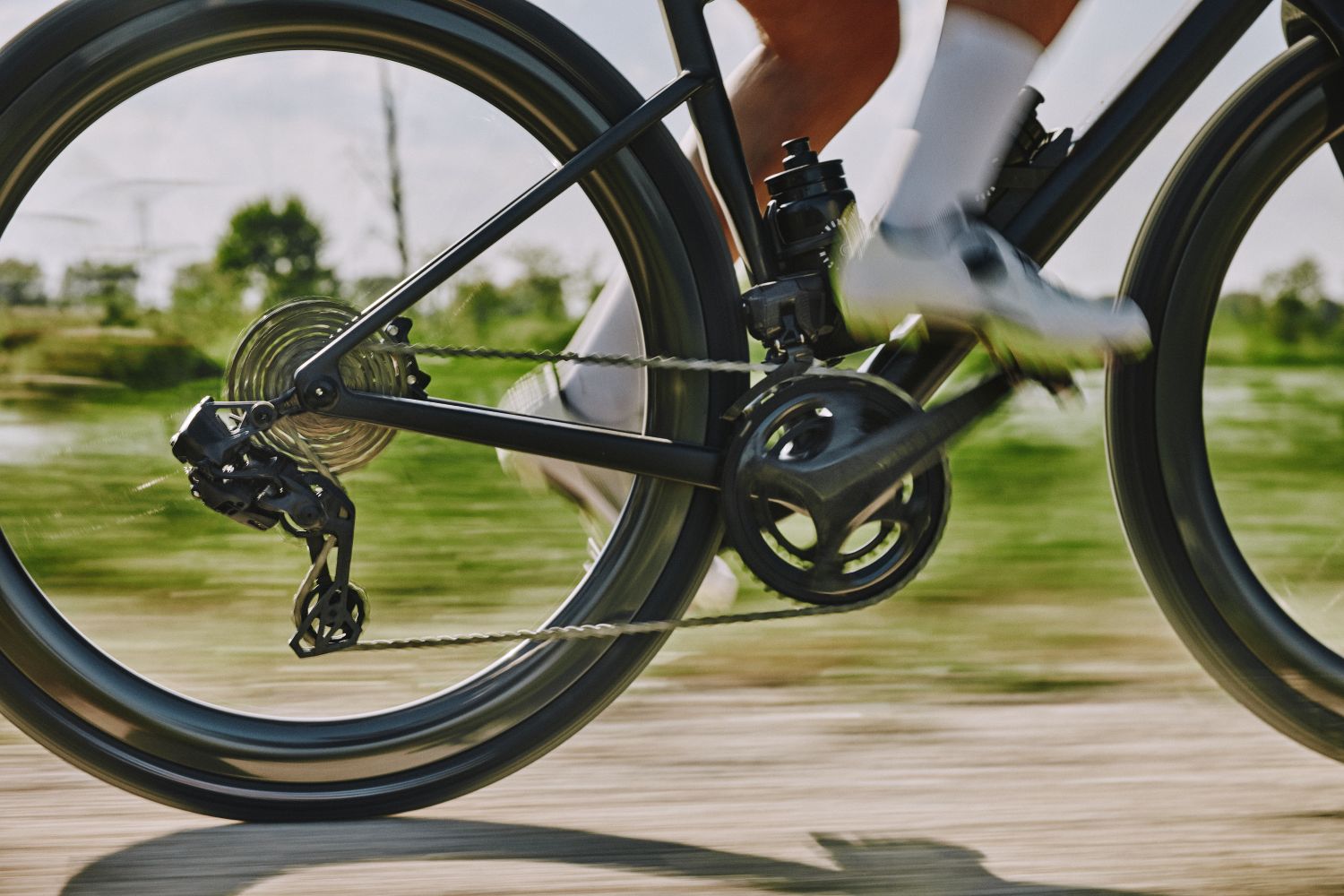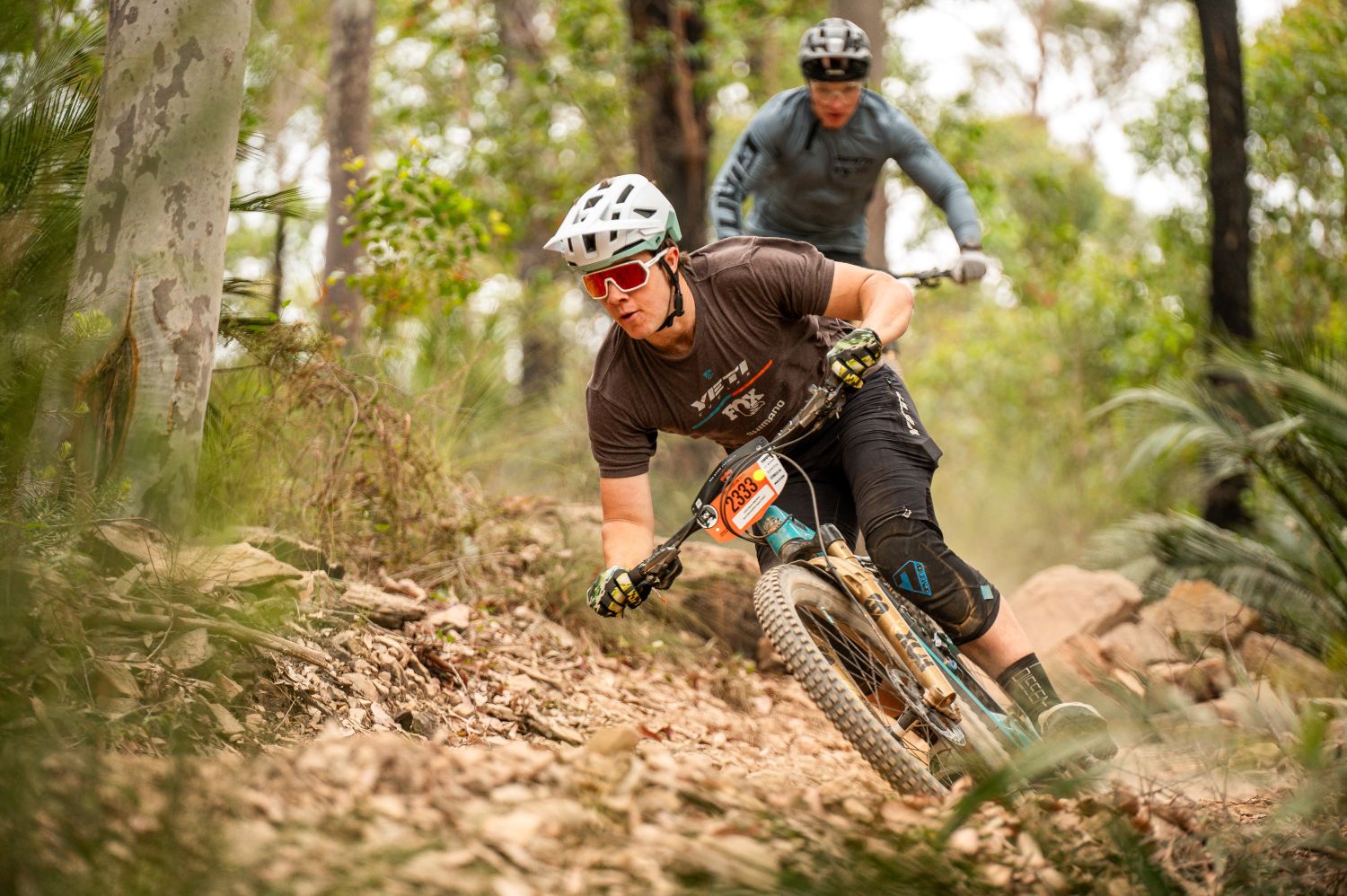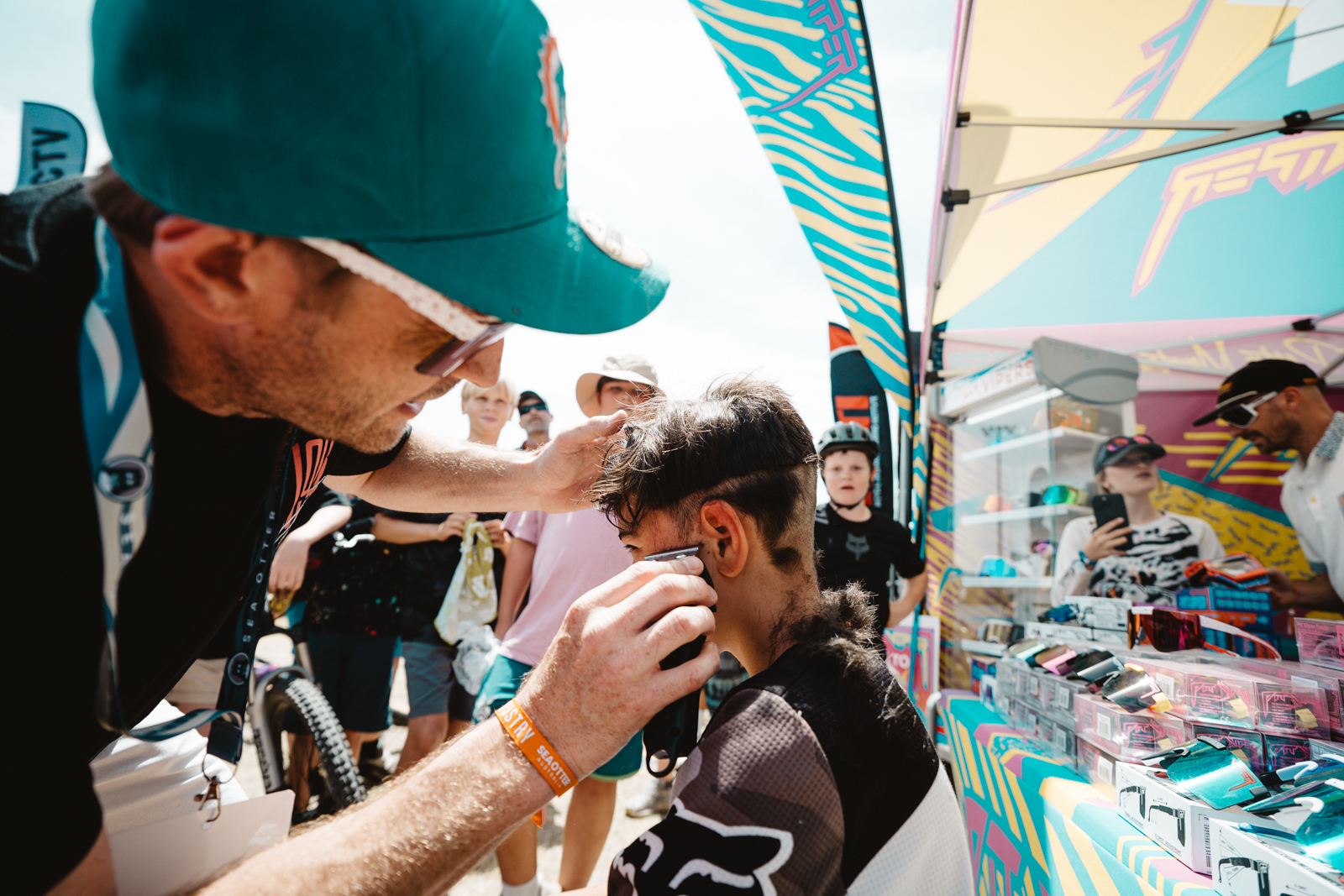Reliving the Perskindol Swiss Epic
The Perskindol Swiss Epic ran for the first time in 2014 - Matt Page reported for AMB last year, here's his account of the race, before he tackles the Flow category in 2015.
Photos: Marius Maasewerd and Apix Photography
A ribbon of trail in view as far as I can see ahead of me, barely wide enough to be called singletrack but we have to push on. Flat out, through every corner – switchbacks left and right, sweeping bends that make you switch feet every few seconds. A quick glance behind – we are clear, “keep pushing, nearly there”. Zermatt is in the distance; the final descent is a mixture of thoughts. I want it to go on and on, with a never ending magic carpet ride through the alpine meadows – but the town marks the end of the Swiss Epic and finishing it is the main priority.
Switzerland is a country famous for many things: banks, watches, chocolate, army knives and of course mountains and everything that follows, including mountain biking. Well regarded as one of the best riding locations and with a plethora of famous single day events such as Grand Raid but as of yet, it has never hosted a mountain bike stage race. The multi-day format has been growing rapidly over the last decade, so it was unsurprising to see that someone decided to organise a stage race in Switzerland. Take the amazing mountains within the Alps, mix it with Swiss precision and you get the Swiss Epic.
A 6-day, multi-disciplined stage race from Verbier to Zermatt. A total of 400km and 15,000m climbing, plus the addition of an enduro category called the “Swiss Epic Flow”, which uses lifts in places as well as a few extra, more technical downhill trails but with a still challenging 300km with 8,000m climbing. Quite possibly the first time where 2 different events, each with its own logistical challenges is organised at the same time, within the same overall event. Promising a huge amount, plus with the backing of super Swiss star Thomas Frischknecht, did the Swiss Epic deliver?
ON THE LINE
On the start ramp for the time trial prologue, with my race partner Stu just beside me, we get the countdown from the guy with his hand as well as in French, reminiscent of time trials in something like the Tour de France.
5, 4, 3, 2, 1. GO!
I take the lead, weave through a few cones and straight into the first climb through Verbier village.
“Allez, allez, die, die, die!” – Was that really Ralph Näf cheering at us? They certainly have plenty of big names racing with more World Champion stripes than I can count.
The climb is tarmac as we head out of the village, by the time it turns to gravel the start is well behind us and the lungs are settled into the near flat out pace that any prologue demands. It’s a 40-minute climb to the top, then a chance for the legs to have a little rest as we head almost straight back down.
Will it be a gravel road descent? I hope not and I have my fingers crossed. The arrow points right and with it the well-known sight of the 3 down arrows that either puts the fear in people or has them jumping for joy. I fall into the latter – the course is a downhill track within the Verbier bike park, normally accessed by the Gondola by thrill seekers on long travel bikes – yet here we are on XC hardtails and short travel full suspension bikes with the seats pointing high in the air. Jumps, drops, doubles, switchback – this is the best of everything. Far too soon for my liking we emerge from the woods and the singletrack onto the tarmac again and the finish line is in sight. Crossing the line, we share a high five and we turn to the big screen to watch the big guns who follow behind us.
The Swiss-German duo of Urs Huber & Karl Platt from Team Bulls take the lead, a full 9 minutes quicker than us.
But even their lead doesn’t last long, as the clock ticks down the top guys are flying through, first Olympic Champion Jaroslav Kulhavy & Christoph Sauser, then Mathias Flückiger & Lukas Buchli and finally Nino Schurter & Florien Vogel take the win by just 10 seconds! What a brilliant, dramatic way to start a race. It really set us up for the rest of the week. As the adrenaline slowly dissipates we can think about the days ahead. The prologue is just a taster of what lays ahead of the next 6 amazing days.
Leaving Verbier, for the start of the first full length stage we climb up a long gravel road, that anyone who has ridden the Grand Raid will know all too well, complete with pitch black tunnel near the top that ensures carnage and crashes galore as unsuspecting riders slam on their brakes as the light completely disappears. From the top at 2000m it changes to fast, technical singletrack and a few technical drops and switchbacks to catch out the less confident.
Any thoughts about the race being full of gravel road descents are thankfully dispelled quick enough after that descent, although I do wonder if some people are perhaps expecting quite a technical race and I guess that is often a challenge for a new event. How do you accurately portray the riding to attract the right riders? Get it wrong and there will be a lot of unhappy customers.
THE SHAPE OF THE RACE
As we head away from Verbier towards the valley floor the course follows the Suone, these ancient irrigation channels built into the mountain side, dating from as early as the 13th century, take the water from the mountain tops, then gradually disperse the water across the valley floor for crop irrigation using gravity alone. The trails that follow alongside offer kilometre after kilometre of challenging, root infested singletrack with plenty of little ups and downs before eventually disappearing off the side of the valley down a rocky gulley.
The occasional section of riding along the valley floors give some respite from the big mountain climbs that can’t be avoided. Every stage finish is in an alpine village, meaning there is always a climb to finish. From the steep grass finish to Leukerbad, to the near vertical footpath to the finish of stage 4 at Grächen, a small village perched on what looks like a cliff from a distance, demanding every ounce of energy to get to the finish.
What goes up… and here the Swiss Epic does not disappoint. Not once. The downhills are often beyond belief. Offering very challenging riding, but always within the realms of possibility on XC bikes, but often blurring the lines between XC and all mountain. A dropper seatpost would have been invaluable at times and a full suspension bike really helps with descents lasting up to 30 minutes, almost entirely on singletrack. The most memorable descent came during stage 5, after a monster road, then gravel climb to beyond 2100m elevation before plunging down one of the longest and most enjoyable descents I’ve ever ridden.
As I blast down, in maximum concentration mode, going as fast as I dare on a downhill all of a sudden, a whoosh as 2 riders fly past with barely a sound – the leading Swiss Epic Flow riders, cutting through the pack of XC riders with ease and precision. It can be easy to forget that there are effectively two races within one at Swiss Epic, but the enduro style Flow looks like so much fun, with the ability to ride a bigger bike and blast the downhills that I almost want to switch across and get a bigger bike. They still have a decent amount of climbing, but there are also vehicle uplifts to take out the biggest climbs.
A WORLD BEATER
Stage races have different appeals to different people. There are those who just want to finish and challenge themselves. They search for big views, new friends, and perhaps the opportunity to visit a new country. The Swiss Epic ticks all these boxes. It is one of the most complete mountain bike stage races in the World. Big climbs, tough descents, distances that border on triple figures. Then there are those who love to race, to fight every inch of the way and although they might not be winning, or anywhere near the front that is what makes it fun. You see the same riders each day, sometimes you finish ahead, other times you are behind. By the end of the week, all you really want to do beat your new nemesis team.
We were definitely in the “enjoy racing” category. While my team mate Stu and I were racing together for the Subaru-MarathonMTB.com Team – this race is the first time we have actually ridden together. But we had worked out the nuances of each others riding, and how to race together as best as possible. And for stage 5, the final stage, everything was on the line – we might be able to finish in the top 20. Team Popeye had been giving us a battle all week. As we approached the end of the final stage, with Zermatt in sight we pushed on, putting everything into the climb and pushing the limits on the downhill.
The final descent, the one I will never forget, flowing endlessly down the mountain and into Zermatt. As we crossed the line, with massive grins, big high fives, the winners, Mathias Flückiger & Lukas Buchli were being interviewed by TV crews. A tough fought and well deserved win, but they were not the only winners. The organisational team behind the event deserve the biggest cheer.
The Swiss Epic team delivered a first class event in the very first edition. Merging the desire for challenging climbs with technical but enjoyable descents. The verdict was unanimous, the organisation was flawless and the Swiss Epic is one of the best races in the World. It is up there among well-established classics such as Cape Epic, Transalp & the Crocodile Trophy. It hasn’t gone unnoticed with the UCI either, bumping the Swiss Epic straight up to HC classification, the highest possible for a MTB stage race.
In 2015, the race will run from 14-19 September.

